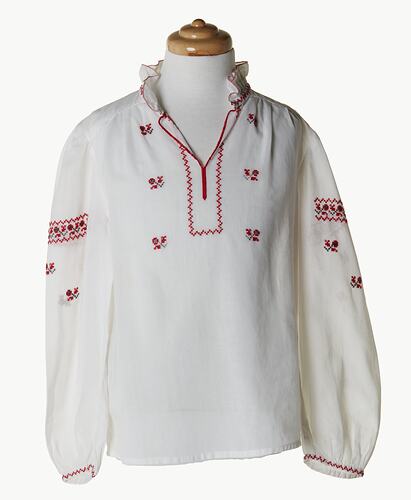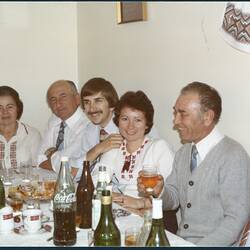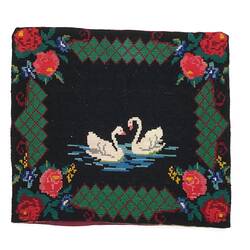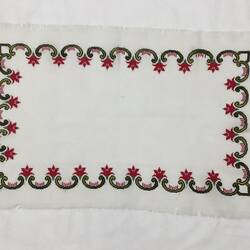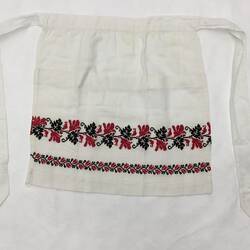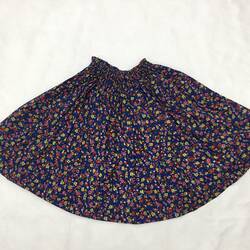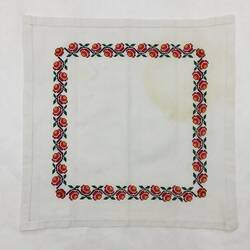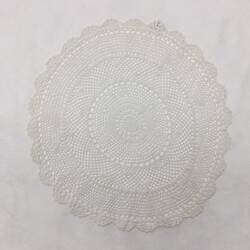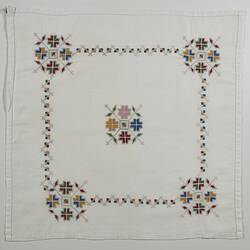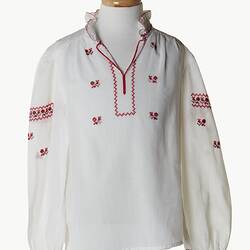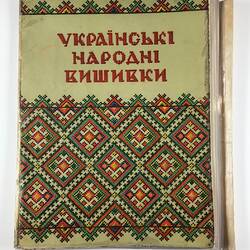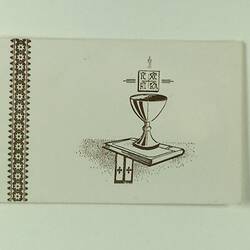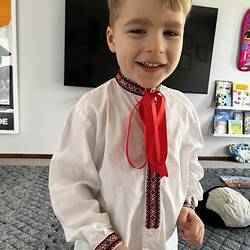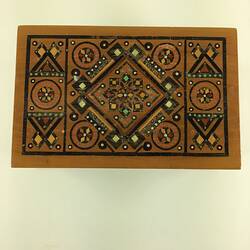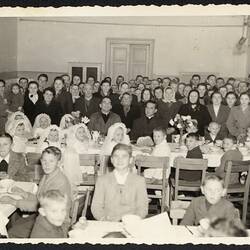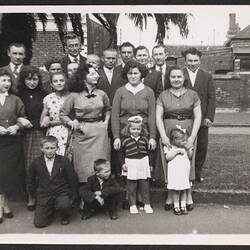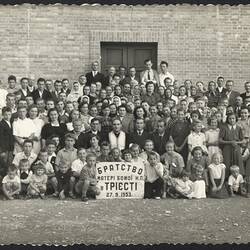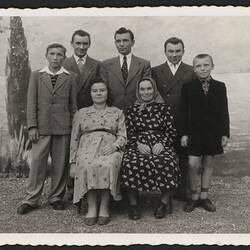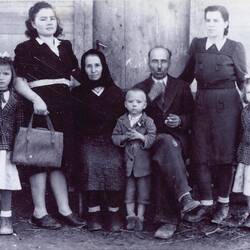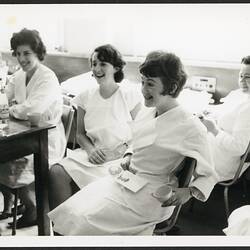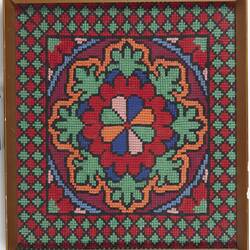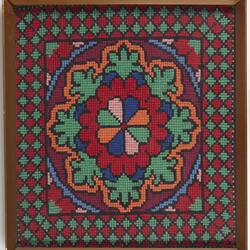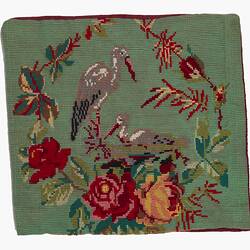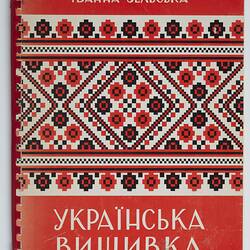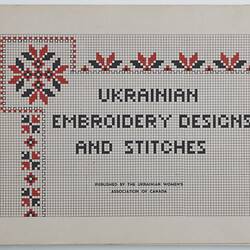Summary
A collection of almost one hundred items explores rich stories of Ukainian migration and cultural maintenance in Australia.
This collection of over 100 cultural items, and family and community photographs, explores rich stories of Ukrainian migration and cultural maintenance in Australia.
Community:
The collection demonstrates the strength of the local Ukrainian community in Melbourne and Geelong and its active maintenance of cultural traditions, such as building churches and halls; the formation of singing, dancing, scouts and other cultural groups; and migrant working life on farms and in factories.
Gender:
The gendered nature of cultural practices comes through strongly in this collection, with the domestic arts overwhelmingly the domain of women; and the centrality of needlework (especially embroidery) the outputs of which were used to furnish homes, but also as central to cultural rituals such as weddings, Easter celebrations, and forms of gift-giving.
Nevertheless, there is also the presence of more male creative practice through the timber inlay pieces created by Konstantin Lubarski (who re-settled in Moonee Ponds, Melbourne) and a hand-made Bandura (Ukrainian stringed musical instrument).
These items are complimented by another example of male artisanry in the broader Migration collections: the timber carved and painted album covers made by Ukrainian migrant Orion Wenhrynowycz in Bonegilla in 1948. Transnational Connections:
This collection also illustrates the importance of transnational connections with the purchasing and gift-giving of cultural items in Ukraine and from Ukrainians still living overseas; the active support of Ukrainian cultural maintenance through such endeavours as Mr Fokshan's Glenroy bookstore; and the evident cultural maintenance from outside Ukraine stretching back generations in Europe. This is a story of cultural connection and identity which supersedes national borders and citizenship.
Photographs:
All of the material culture is supported by a collection of family photographs which provide important visual context for these objects and stories, in particular the wearing of the regional clothing and domestic use of other needlecraft items.
More Information
-
Keywords
-
Authors
-
Article types
